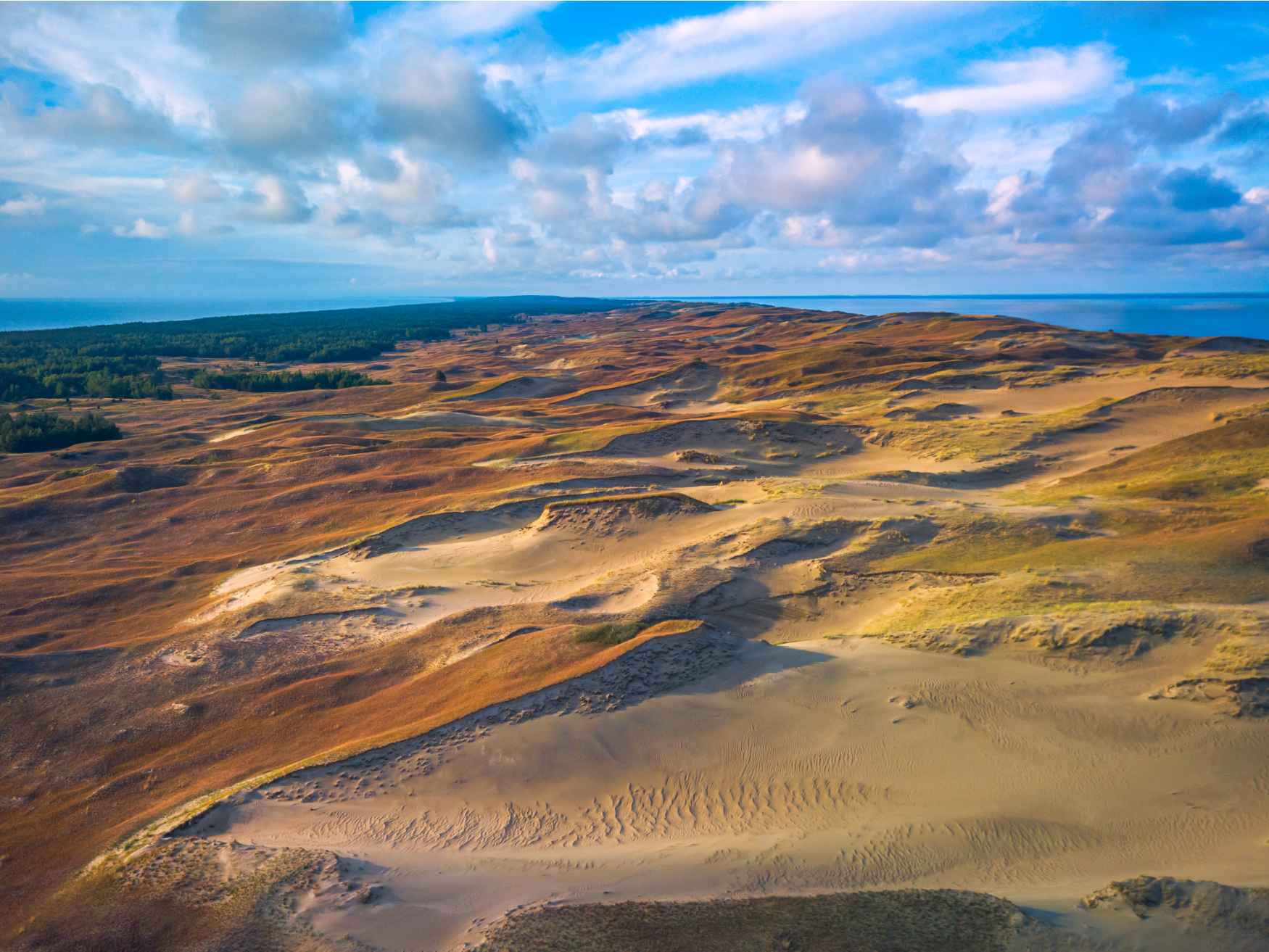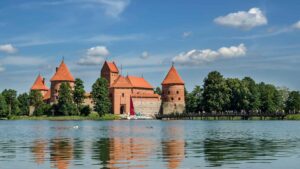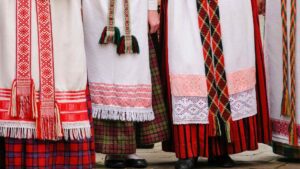25 Interesting Facts about Lithuania
Nestled in the heart of Europe, Lithuania is a country that might not dominate the headlines but certainly captivates the hearts of those who delve into its rich tapestry of history, culture, and natural beauty. From its status as the geographical center of Europe to its ancient language that whispers tales of centuries past, Lithuania is a treasure trove of intriguing facts and stories. This article embarks on a journey to explore 25 interesting facts about Lithuania, shedding light on its unique traditions, remarkable landscapes, and the resilient spirit of its people. Each fact peels back a layer of this Baltic gem, offering insights into a nation that seamlessly blends its storied past with a vibrant, innovative present. Join us as we uncover the compelling reasons that make Lithuania a must-visit destination for curious minds and adventurous souls alike.
1. Lithuania is Home to Geographical Heart of Europe
Lithuania is home to the geographical center of Europe, as determined by the French National Geographic Institute. This symbolic location near Purnuškės is marked by a monument, celebrating Lithuania’s central place in the continent’s cultural and historical landscape.
2. Lithuanian is One of the Oldest Languages
The Lithuanian language stands as one of the oldest in the world, maintaining close ties to ancient Indo-European roots. Its preservation of archaic phonetic and grammatical features provides invaluable insights into the history of human language.
3. The Hill of Crosses

This site near Šiauliai, adorned with over 100,000 crosses, symbolizes the Lithuanian people’s enduring faith and resilience against historical oppressions. It’s a powerful testament to national identity and spiritual endurance.
4. Basketball as a Second Religion
In Lithuania, basketball is more than a sport; it’s a national passion. The country’s remarkable success on the international stage, including Olympic medals, reflects its deep love for the game.
5. Lithuanian Capital Vilnius: Baroque Beauty

The capital’s Old Town, a UNESCO World Heritage site, is renowned for its extensive and well-preserved Baroque architecture, offering a glimpse into the city’s rich historical and cultural fabric.
6. Pioneers of Independence
Lithuania was the first Soviet republic to declare independence from the USSR on March 11, 1990. This bold step marked a crucial moment in the dissolution of the Soviet Union and the restoration of Baltic sovereignty.
7. Lithuanian Distinctive Traditional Dress

Lithuanian traditional dress is a vibrant expression of the country’s culture and heritage. These costumes vary by region, featuring intricate patterns, colors, and weaving techniques that have been passed down through generations.
8. The Curonian Spit

Shared with Russia, this UNESCO World Heritage site is celebrated for its breathtaking landscapes, including towering sand dunes and lush forests, embodying the natural beauty of the Baltic region.
9. Lithuanian Amber Galore
Often referred to as the “gold of the North,” Lithuania’s Baltic coast is renowned for its amber, especially after storms. The Palanga Amber Museum displays an impressive collection, including pieces with ancient inclusions.
10. Lithuania is a Land of Lakes and Forests
With approximately 6,000 lakes and forests covering around a third of its territory, Lithuania offers abundant natural landscapes perfect for outdoor enthusiasts.
11. Lithuanian Cuisine
Lithuanian cuisine is a blend of traditional and modern influences, known for its use of potatoes, meat, and dairy products. Dishes like cepelinai (potato dumplings) and šaltibarščiai (cold beet soup) are staples, reflecting the nation’s culinary creativity and heritage.
12. Lithuania's World-Class Internet Speed
Lithuania boasts one of the world’s fastest internet speeds, highlighting its rapid development in information technology and communications. This makes the country an attractive location for tech startups and digital nomads.
13. Užgavėnės Festival
Užgavėnės is a traditional Lithuanian festival that marks the end of winter and the beginning of spring. Celebrations include wearing masks, dancing, singing, and eating pancakes, symbolizing the expulsion of winter.
14. Historic Coinage
The Lithuanian litas had a rich history before the euro adoption in 2015, showcasing the country’s long tradition in numismatics.
15. A Nation of Song
Lithuania is often called “the land of songs,” reflecting its strong tradition of folk music and singing. The Song and Dance Festival, held every four years in Vilnius, is a UNESCO Intangible Cultural Heritage site, showcasing the vibrant musical traditions of the Lithuanian people.
16. First Book in Lithuanian
The first book printed in the Lithuanian language was the Catechism by Martynas Mažvydas in 1547, marking the start of Lithuanian literature.
17. Stelmužė Oak
Among Europe’s oldest trees, the Stelmužė Oak is over 1,500 years old, standing as a natural monument to Lithuania’s ancient past.
18. Innovative Biotech Industry
Lithuania has a rapidly growing biotechnology sector, recognized for its cutting-edge research and development, contributing significantly to the global biotech industry.
19. Vilnius University
Established in 1579, it is one of the oldest universities in Northern Europe, a center for education and enlightenment throughout the centuries.
20. Lithuania's Unique Easter Traditions
Lithuania’s Easter egg decoration, known as “margučiai,” involves intricate designs and vibrant colors, showcasing the country’s rich folk art traditions
21. The Baltic Way
In 1989, about 2 million people formed a human chain spanning across Estonia, Latvia, and Lithuania, a peaceful protest against Soviet occupation and a striking demonstration of Baltic unity.
22. Grūtas Park
This open-air museum, also known as “Stalin’s World,” displays Soviet-era statues and memorabilia, providing a stark reminder of Lithuania’s recent past.
23. Neringa Municipality
Known for its scenic beauty, this area on the Curonian Spit is famed for its tranquil beaches, dunes, and artistic heritage, attracting visitors seeking peace and inspiration.
24. Sugihara House in Kaunas
In Kaunas, Sugihara House museum honors Chiune Sugihara, the Japanese diplomat who saved thousands of Jewish lives during World War II by issuing transit visas, showcasing Lithuania’s connection to global history and humanitarian efforts.
25. Rumšiškės Open-Air Museum
This expansive museum offers a comprehensive look at Lithuanian rural life, featuring authentic villages and farmsteads from different regions, preserving the country’s cultural and historical heritage.
Conclusion
These 25 interesting facts about Lithuania illuminate the diverse facets of a country that seamlessly blends its historical legacy with a forward-looking spirit, making it a captivating destination with much to offer.
Frequently Asked Questions about Lithuania
1. What is the capital of Lithuania?
The capital of Lithuania is Vilnius, known for its beautiful Old Town, rich history, and vibrant culture.
2. What languages are spoken in Lithuania?
The official language is Lithuanian, one of the oldest languages in the world today. English is widely taught in schools and is commonly used in business, tourism, and by the younger generation. Russian and Polish are also spoken within certain communities.
3. What currency is used in Lithuania?
Lithuania uses the Euro (EUR) as its official currency since January 1, 2015.
4. When is the best time to visit Lithuania?
The best time to visit Lithuania is from late spring to early autumn (May through September) when the weather is pleasant, and the country offers a plethora of festivals and outdoor activities. July and August are particularly vibrant, albeit with higher tourist numbers.
5. What are the top attractions in Lithuania?
The best places to visit in Lithuania include the historic Vilnius Old Town, the Hill of Crosses near Šiauliai, Trakai Island Castle, the Curonian Spit National Park, and the coastal city of Klaipėda, which serves as a gateway to the Baltic Sea beaches.
6. Do I need a visa to visit Lithuania?
Lithuania is part of the Schengen Area. Visitors from countries that are part of the Schengen agreement do not need a visa for stays up to 90 days. Visitors from other countries may need a Schengen visa. Always check the latest visa requirements for your nationality before planning your trip.
7. What is traditional Lithuanian food?
Traditional Lithuanian cuisine features dishes such as cepelinai (potato dumplings filled with meat or curd), šaltibarščiai (cold beetroot soup), kibinai (pastries filled with meat or vegetables), and various rye breads. Dairy products, especially cheese, are also a significant part of the diet.
8. Is Lithuania safe for tourists?
Lithuania is generally safe for tourists. As with any travel destination, it’s essential to exercise standard precautions, especially in crowded areas and tourist spots, to safeguard against petty theft.
9. Can I use public transport to get around Lithuania?
Lithuania has a well-developed public transport system, including buses and trains that connect major cities, towns, and tourist destinations. Vilnius, Kaunas, and Klaipėda also have efficient city bus and trolleybus networks.
10. What unique souvenirs can I bring back from Lithuania?
Popular souvenirs include Baltic amber jewelry, linen products, wooden crafts, local honey, and hand-painted Easter eggs. Traditional Lithuanian art and crafts make for unique and meaningful gifts.
11. What is Lithuania known for?
Lithuania is known for its rich history, stunning architecture (especially in Vilnius Old Town), beautiful natural landscapes (like the Curonian Spit), basketball passion, and significant contributions to European culture and politics.
12. How do Lithuanians celebrate their national holidays?
Key national holidays include Independence Day (February 16), the Day of Restoration of Independence (March 11), and Joninės or Rasos (Midsummer’s Day, celebrated on June 24). These holidays are marked with various public events, parades, folk music, dancing, and traditional food.
13. Is English widely spoken in Lithuania?
Yes, English is widely spoken in Lithuania, especially among the younger population, in major cities, and in tourist areas, making it relatively easy for tourists to communicate.


